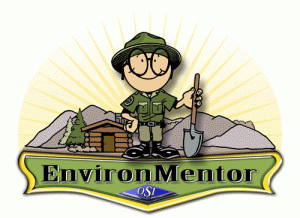Achieving Green Cleaning

Article from the March 2012 Issue of The Cleaning Gazette
There is a conflict in the professional cleaning industry. The green cleaning movement has pushed for cleaning products and practices that are free of toxins, poisons, endocrine disrupters and known carcinogens. Yet, recent outbreaks of infectious diseases and drug-resistant bacteria demand that pathogens be eliminated from the indoor built environment utilizing “kill” agents (read poisons).
In (OS1), we meet both requirements by utilizing an engineered cleaning process and a scientifically validated process for reducing pathogenic microorganisms. (OS1) strikes the right balance between being environmentally sustainable and controlling pathogenic microorganisms.
Benchmarking Best Practices
For twenty years, we have educated organizations about cleaning processes and products that ensure their worker’s health and safety. Aerosols and volatile organic compounds (VOCs) were first reduced, then eliminated from the (OS1) program. They were replaced by Green Seal Certified chemicals that also provided a source reduction of landfill waste. Mixing chemicals was eliminated. All daily-use (OS1) cleaning chemicals come in pre measured packs so the worker just adds water. This eliminates the danger of chemical overexposure. Although to (OS1) users it is just common sense and education, this is an uncommon practice in the jan/san industry. In addition to safer chemical formulations and packaging, our (OS1) trained Coaches teach their employees chemistry basics including the pH scale, the “4 S’s of cleaning” and cleaning physics. They also train their employees on the correct application of cleaning tools and time. New, neutral pH disinfectants were introduced by PortionPac that effectively kill pathogens, but are safer on surfaces.
John Walker, President of ManageMen says:
“It’s all about knowing the surface and using the right chemical solvent on the soil that is present at the right time. Do it right the first time and you won’t damage surfaces and you won’t have to do it over.”
Disinfection requires not only the right solution, but friction as well, according the the Centers for Disease Control (CDC). The tool of choice to provide that friction is the (OS1) specified Unger microfiber cloth. Microfiber razor-scrapes the surface. It actually cuts the bacteria away from the surface. The use of color-coded microfiber cloths helps prevent cross-contamination and communicates to the cleaning team who is following instructions. Microfiber is also easier to launder because the weave is so tight, pathogens are washed off the surface quite simply.
Maintaining Indoor Air Quality
Even with the presence of toxic cleaning chemicals reduced, indoor air quality can suffer without proper cleaning techniques and subsequently affect the health of cleaning workers and building occupants. It’s vital that contaminants in the air are captured at their source, before they enter our breathing zones. High efficiency vacuum filters and HEPA filters remove those invisible particulates that carry bacteria and mold spores.
Filters on vacuums clog frequently. When filters are dirty, clogged, and not changed often enough, they lose efficiency. Air quality is almost entirely a function of a custodian’s cleaning or polluting functions indoors, according to Dr. Berry’s UNC study. It is fundamental that the practices of indoor environmental management include tracking vacuum filter changes and cleaning.
Catch Dirt at the Door
“Something as simple as floor mats can also make a huge difference”, according to Dr. Michael Berry in the University of North Carolina -Chapel Hill, publicly funded study comparing “Traditional Housekeeping” with the (OS1) cleaning process in 2006.
In (OS1), we specify that the building must have at least a 15-20 foot walk-off mat. That’s at least five steps on a mat to clean your shoes. If you don’t use mats, dirt tracks into the building. Mats are designed to scrape soil from shoes, and carpets have a tendency to hide the dirt. We want to scrape and remove, not conceal dirt.
Cleaning Professionalism
The establishment of professionalism among (OS1) cleaning workers follows their training and certification. They are the true environmentalists of the indoor environment. (OS1) Users must establish themselves as the “EnvironMentors” to the building occupants in the indoor environments that we all share.
